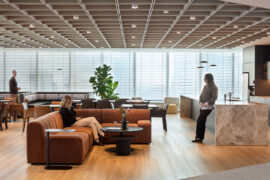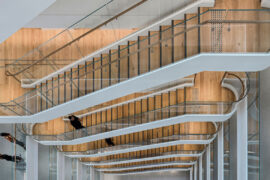
GroupGSA delivers MUFG Pension & Market Service’s Sydney HQ with a dual Japanese–Australian identity, blending precision, warmth and workplace flexibility.

Brad Krauskopf, CEO & Founder of Hub Australia, tells us about Hassell’s design for Hub Australia Martin Place.

Modular rooms provide a versatile, sustainable and cost-effective solution for modern workplaces, offering the flexibility and durability needed in today’s evolving environments.

The listed heritage building at 44 Martin Place has been transformed by Hassell for a flexible workplace offering defined by variety and high-end amenities.

GroupGSA ups the ante on premium, flexible working with the launch of the Executive Centre Sydney Place, located within the landmark Salesforce Tower.

Actiu is known around the world for focusing on one thing above all else: Wellbeing. But what does wellbeing look like in a post-pandemic world? And how can we provide support where it matters most?

The acquisition is expected to drive strong social growth for Viccarbe, a Spanish designer of contemporary furniture for high-performance collaborative and social spaces.

The following ten design projects represent the most inimitable offices we’ve seen of late, in which space goes above and beyond in its role as a facilitator of ABW.

With more and more workplaces embracing open-plan seating and hot-desk culture, the Bika chair, offers a versatile solution to flexible work spaces.

As the modern workspace continues to change and evolve – from hot desking to ergonomic design –breakout rooms have solidified themselves as an essential aspect of work design. But how are these spaces themselves changing?